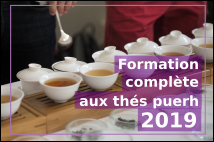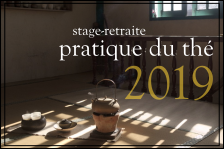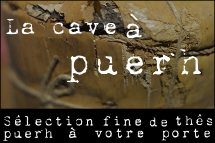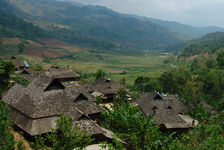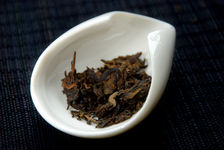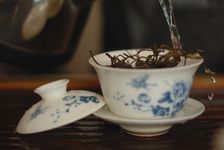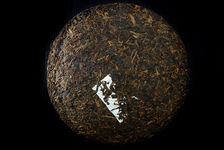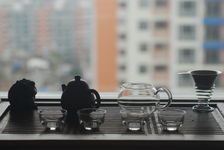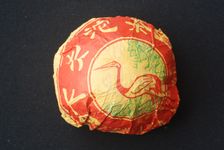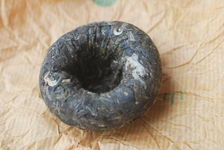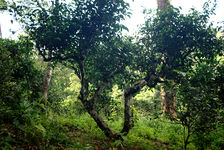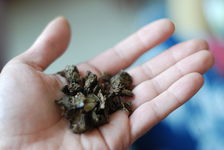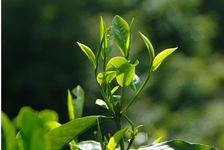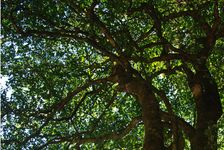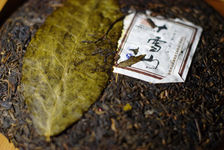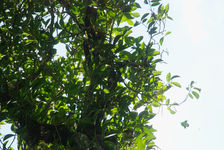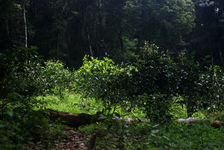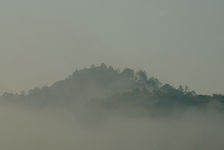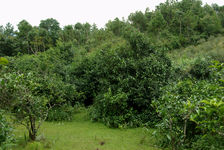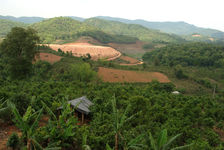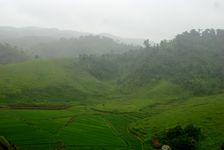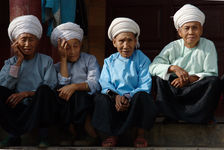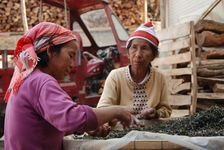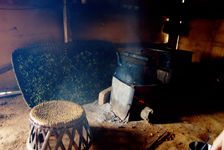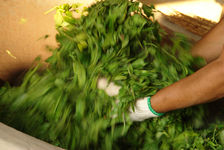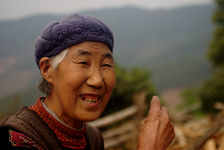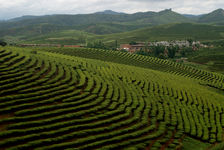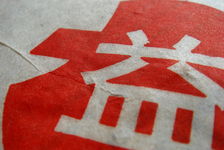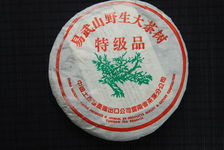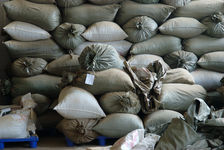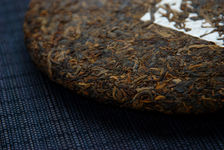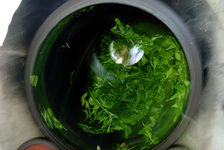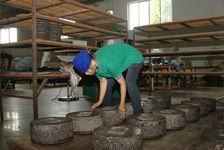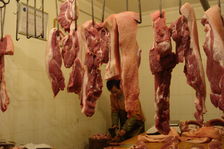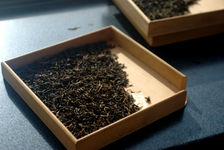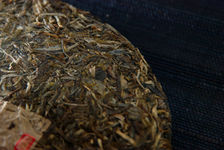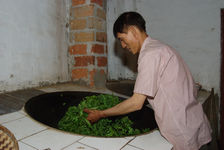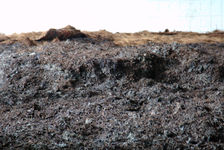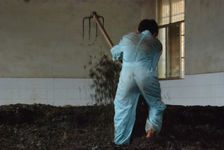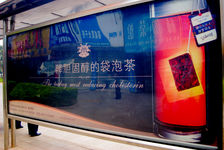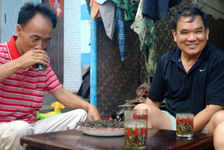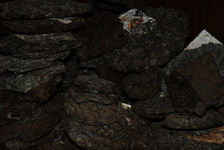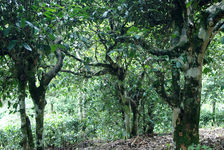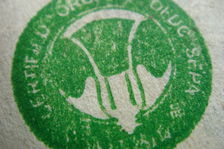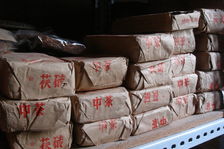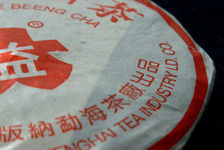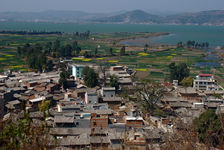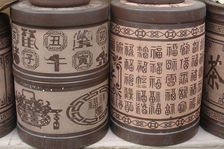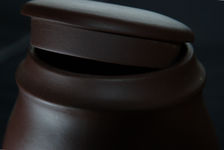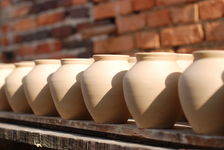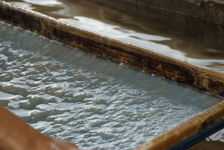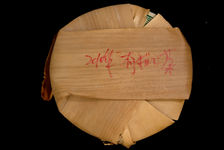 This page is not a real translation but just an automatic translation generated by computer of the original article, written in French language! Its not good... but better than nothing!
This page is not a real translation but just an automatic translation generated by computer of the original article, written in French language! Its not good... but better than nothing!Want to help us do diffuse puerh tea culture in english, by providing a better (or corrected) translation?
Please contact us!

I have read in recent years and heard a lot of misconceptions, and erroneous beliefs about tea puerh. If already in China is not what is lacking, far from it, it's even worse in the West where one is dependent on scarce information published in English, which often forward unchanged things found here and there without too much bother to check ... see sometimes knowing full well that they are false.
So I decided to list for you some of these beliefs, false, we often see here and there, and try to establish the truth about them. Some are for general and can not tell you anything beings, others are more subtle, especially about the fermentation , recipes, mountain tea , of BIO and Health , different types of trees and soils or the conservation and storage of tea .
Going further we realize that often these legends do not come from nowhere, and were built from scratch, or largely fictionalized and disseminated by different people at different periods of history puerh, usually to serve their own interest, and it is particularly interesting to investigate the foundations of such legends, and who is responsible.
I hope these updates will be useful, you will be to correct some erroneous belief that you would have heard it read, and prepare you for the next time you hear a annerie puerh (Pu Er tea) on tea, especially the mouth a seller.
Feel free to write me to respond, if you have anything to say about this endless ...
Overview
puerh (Pu Er tea) occurred in Yunnan and exclusively in the Chinese region
|
It is today and a strict view entirely correct. The appelation puerh (Pu Er tea) is indeed defined since 2003 by Chinese authorities as a fermented product from green tea trees with large leaves, collected in Yunnan and only teas produced in this region are entitled to the appellation of tea puerh.
|
It only consumes puerh (Pu Er tea) in Yunnan for a very short time. Before we are not consumed as green tea and black tea
|
Widespread in Hong Kong where it is often assumed that Hong Kong is at the origin of tea puerh (Pu Er tea) is historically untrue. If in recent times, and even today, much of Yunnan consumes only green tea, texts attest that tea puerh (Pu Er tea) was already known, named as such and widely consumed by the Han and the minorities of Yunnan it are over 400 years ago.
|
puerh (Pu Er tea) is a black tea
|
In a strict sense, and according to Chinese tea puerh (Pu Er tea) name, is part of the post fermented tea category, called "black tea". However the puerh (Pu Er tea) is very different from what is called "black tea" in French, which means a common fermented tea and is called "red tea" in Chinese.
|
puerh (Pu Er tea) is the only tea that the Chinese call black tea
|
Present in different writing poorly documented that we find on the internet, but also in the book in French by Nadia Becaud, this is totally false. Although we observe the last twenty years a great passion for tea puerh, and so it is now unquestionably the dark tea (black tea or Hei Cha in Chinese) most famous, it is not the only tea of this family of tea.
|
The infusion of puerh (Pu Er tea) is dark brown and develops a woody flavor and sugar with a strong wetland
|
Another quote from the book by Nadia Becaud, it is also a widespread perception in the West especially. While some may well puerh (Pu Er tea) meets that description, the generalized thing is very inaccurate.
|
The young puerh (Pu Er tea) raw (unfermented) is exceedingly bitter
|
This is completely false. It puerh (Pu Er tea) there's countless flavors vary according to their land of origin, season and year to which they were collected, the work leaves before compression, age and type of trees they originate. Some of these teas can be particularly bitter (and appreciated as such), while the others will be very soft.
|
puerh (Pu Er tea) is totally undrinkable in its original form (green) so need to be aged or ferment it
|
Perspective that is found in many books, especially from Hong Kong and Taiwan, but then again everywhere. This is still a mink very typical Hong Kong which have been developed fermentation techniques of artificial puerh (Pu Er tea) (wet storage) to make it consumable tea initially considered undrinkable.
|
tea cakes such as those of the form are puerh (Pu Er tea) which was consumed tea there are over 1000 years as described in the classic tea of Lu Yu
|
This is a misunderstanding or translation of ancient texts, no longer seeking recovery here and there to build the myth. The tea was well there are over 1000 years in China consumed in the form of cakes, such as Lu Yu recounts, but the cakes they had except their circular shape, not much in common with our cakes puerh.
|
puerh (Pu Er tea) brewing in tiny teapots and eaten with tiny cups
|
Thus many people in the West see the puerh, and are sometimes repelled by the idea of playing at meals or drinking a few cups of cl ...
|
puerh (Pu Er tea) Tuocha and tea are two different things
|
Puerh tea is generally arrived in the West as Tuocha, many people, including scientific studies, this tea called "tea Tuocha" in making it a type of tea in its own right. By extension, therefore, some people consider a side puerh (Pu Er tea) tea and other tea Tuocha, as two different types of tea.
|
Tuocha is a brand of tea puerh (Pu Er tea) found in great businesses western
| Tuocha Yunnan is a registered trademark under which sold a puerh (Pu Er tea) fermented very average, especially in some supermarkets and small shops in Europe and North America . Tuocha but is primarily a Chinese common name to designate the compressed tea bowl-shaped, one of the most common forms of puerh (Pu Er tea) with slab and brick. The "real" tuochas are very long products in China under different brands, the best known and oldest is Xiaguan. |
Trees and origins of tea puerh (Pu Er tea)
All teas, including puerh, come from the same tree: the famous Camellia Sinensis
| Although the majority of grade teas from many a species of Camellia Sinensis, Camellia species are used to produce tea. In the case of puerh (Pu Er tea) including being spent not only the Camellia Sinensis Camellia but also Taliensis. In addition there are many varieties within those species such as the Camellia Sinensis or Assamica Pubilima the Camellia Sinensis, as well as many local varieties (nearly 200 years the Yunnan) which will have distinct characters and produce teas aromas and properties radically different. |
ethnic minorities of Yunnan ate it there's already 1000 years ago the puerh (Pu Er tea) as we drink today
|
This is not entirely accurate. It is true that different ethnic groups living in the existing mastered already cultre Yunnan tea trees of us and we left the old gardens sometimes going back over 1000 years ago and we can deduce that these people ate the leaves.
|
puerh (Pu Er tea) is a tea whose leaves are particularly large
|
This belief, shared and endorsed notably by Nadia Becaud in his book in French comes from a misinterpretation of the origin of the sheets comprising tea puerh. A majority of puerh, particularly in the area Menghai, come from trees called "big leaf", which grow from very ancient times in southern Yunnan.
|
puerh (Pu Er tea) (or proper puerh) comes from wild tea.
|
It's an idea, commonly believed by the uninformed beginner, and widely distributed by a number of unscrupulous sellers and producers. If it there's 2000 years, and as related by Lu Yu tea was consumed by the wild drinker demanding quality and considered qualitatively better than the tea planting things have changed since then and, although there are still a number of wild tea trees in Yunnan, their use is rare, and wild tea cakes less common than some would have us believe. For various reasons.
|
puerh (Pu Er tea) of wild tea plants do not exist (or more) on the market, and all teas sold as such are false
|
Consequence of what has been said before, it is common to hear that puerh (Pu Er tea) wild trees never come true wild trees, such as harvesting of these is prohibited.
|
puerh (Pu Er tea) (or best puerh) comes from ancient trees
|
There are a number of ancient tea trees in Yunnan, especially in some areas, and some rare teas are indeed obtained from these trees. After it is a catchy and easy shortcut to say that the puerh (Pu Er tea) generally comes from trees as old, and most puerh (Pu Er tea) market come from trees younger than 10 years for younger trees planting, a few hundred years for the majority of ancient trees.
|
puerh (Pu Er tea) good comes from ancient trees. Young trees and Tai Di in turn produce a tea of low quality and irrelevant to the amateur.
|
This is a classic argument that many sellers are abusing to push to the consumption of expensive products and justify the high price of some teas.
|
Soils and Tea mountains
puerh (Pu Er tea) (or good puerh) shoot (s) at high altitude in extreme conditions
|
Originally from the forests, the ancient tea trees of Yunnan grow naturally in mountainous areas of this region. Some soils are particularly remote and so may approach 2000m.
|
Product quality is the soil where it originated
|
It's not false either, and the soil to a major influence in the quality of puerh, but it is nevertheless a statement in perspective. It is indeed often forget the influence of technology, the quality of tea depends at least 50%.
|
puerh (Pu Er tea) originated Xia Guan District in southern Yunnan
|
Still nonsense that it is good to restore from the book of Nadia Becaud. Xia Guang to start is not located in southern Yunnan, but north, away from the plantations in Xishuangbanna.
|
The best puerh (Pu Er tea) come from Xishuangbanna and in particular the region of Menghai
|
No. Although this idea is promulgated by the producers of this region, Xishuangbanna and riding Menghai do not produce either a tea superior to other producing regions such as Lincang or Pu'er (former Simao).
|
puerh (Pu Er tea) (or best puerh) shoot (s) in 6 (or 10) famous mountains of Yunnan
|
No. There are plenty more where soils are puerh (Pu Er tea) harvested teas such as those contained in say six famous mountains. Note also that many of the most famous vineyards today are outside of these six mountains, such as Lao Banzhang (Bulang Shan) or Bing Dao (Mengku).
|
The best puerh (Pu Er tea) occurred at Wu Yi
|
This is false. Although Wu Yi has a long history in the puerh, and an important place in the history of tea and Wu Yi area has a good number of excellent terroirs, the reputation of that mountain tea, and driven largely orchestrated by the Taiwanese, is overrated and does not reflect today's objective superiority.
|
Producers and manufacturing methods
The manufacturing process and post-fermentation puerh (Pu Er tea) belongs to a local ethnic group which has perpetuated to the present day
|
It is a beautiful fairy account, but not in any case the current process of making puerh (Pu Er tea) (it should still know what it is), let alone its post-fermentation (artificial?) Belongs to "a" so-called ethnic Yunnan who had discovered and perpetuated to the present day.
|
The natives have perpetrated such manufacture or the millennium was compress shaped nest for its conservation
| Another quote from Nadia Becaud on the same subject, it is useful to correct. If again it is the ethnic groups in Yunnan that we owe the first cultivation of tea trees, and a number of mature grounds, sometimes several hundred years old and still in operation today, the compression of when to puerh (Pu Er tea) it, including shaped nest, is not only more recent but is an invention of the Han Chinese bound after taking control of the region by the latter. The first compressed forms (balls) of puerh (Pu Er tea) seems to occur in Yunnan Han in the 16th century, the tuo cha (tea compressed shaped nest) when appearing to him in the landscape in 1916. |
puerh (Pu Er tea) is dried in the sun (sun drying), variant: it is because of this it ages
|
It is indeed as is known in Chinese (晒 青 shai qing) and English (sun drying) an important work sheets puerh, following the leaf rolling (Rou Cha), which consists to let them air dry (see From the tree to the cake ). Some attribute this particular part and specificity of work sheets puerh (Pu Er tea) different properties of this tea, including its ability to evolve over time.
|
A step puerh (Pu Er tea) that one name is "killing the green" is to expose the leaves to the sun to destroy the microorganisms they contain
|
Met several times in texts poorly documented it is a confusion based on a misunderstanding of the stages of tea manufacture puerh (Pu Er tea) (See From the tree to the cake ).
|
The best puerh (Pu Er tea) is found among farmers (small producers)
|
Common idea in Europe where, from our history, we see easily against the side of a small-scale producer respectful of tradition and expertise, and the other big industry intensively. Image also widely highlighted by a number of importers and sellers, proud to offer you the local product guaranteed "small producer" (which is said to meet in passing but in general we forget to quote the name and originally!).
|
largest producers of tea puerh (Pu Er tea) offer intensive production while small that offer local products
|
This is a very common assumption, particularly in the West, and the need to relativize. The majority of production in Yunnan puerh, in terms of volume, comes from big productions more or less intensive. Major brands of flow puerh (Pu Er tea) indeed a good part of this tea cheap (Menghai Tea Factory and Xiaguan eg flow annually nearly 12,000 tons of tea, partly through cheap goods from big production).
|
Only famous brands such as DaYi (Menghai Tea Factory) offer good puerh (Pu Er tea)
|
This is a widespread belief in China, where brands like DaYi Xiaguan or enjoy great recognition and that many consumers are (sometimes blindly) trust. Recognition largely driven partly by the long history of these companies, virtually inseparable from the history of puerh (Pu Er tea) itself as well as by large marketing resources in place in recent years.
|
In seen the amount of false appellation of abuse, it is best to move towards renowned producers in which we can trust
| Unfortunately this is not so simple, the abusive and false names are so common in China they are almost part of the culture, and we commonly found among producers of reputations. And among many other teas produced by former CNNP, producer and historical state-dependent, are presented as being from wild tea without being at all, different teas produced by Haiwan play subtly but quite honestly not on the appelation BIO, teas come from the famous Mengku called terroir Bing Dao does not come, cakes pressed by the famous Six Famous Tea Mountains are sold (less than 5 euros!) as tea Lao Banzhang , etc., etc. ... |
The major Chinese industries puerh (Pu Er tea) mix of leaves of all types, origin and quality in their cakes
|
One idea I have often heard, especially in France, and largely driven by a handful of producers and importers of Western, which are increasingly pressing their own cakes in China a tea called higher as they present "pure".
|
Some cakes are scams, the outer leaves are thin and beautiful while that inside is lower quality
|
No, some cakes are made this way, it is quite normal. If you bought a worry, you did not cheated, unless the seller has told you that the cake was made only late grade, in which case the seller must be s' take but not the producer of the wafer.
|
The use of machines in the work of tea, especially during the Sha qing, produced a worse result than manual work
|
The question is not as simple as willing to believe different producers and sellers of tea, every wind that advocate the superiority of their teas called "100% handmade." In most cases this is also an argument totally free, said sellers who have no real way of knowing which way they offer leaves were worked, and today even in small villages Many farmers use machines, especially to make the Sha qing cha or Rou.
|
puerh (Pu Er tea) patties are pressed handmade using heavy stones
|
This is indeed the traditional method of compression puerh. Still performed in some villages, in many small shops and even a number of factories, the majority of cakes market, especially blockbusters, are now pressed against using mechanized presses.
|
When making patties puerh, tea leaves are mixed with the blood of beef or pork for them to stick together
|
This ancient belief, which has a lot of in shock has no basis truthful. It seems that the legend comes from Tibet, where the compressed puerh (Pu Er tea) arrived via the famous tea route and Horses. Different people (anthropologists, missionaries, etc ...) would thus collected information from Tibetans on the manufacturing processes of these bricks puerh. But the Tibetans interviewed had no idea of the real manufacturing processes of brick Yunnan and Sichuan, and there have emerged the idea of blood used to glue the sheets together.
|
Puerh and fermentation
puerh (Pu Er tea) tea is (artificially) fermented, brown (or black)
|
Current belief in the West. A majority of consumers preferring Western tastes round, soft, soothing the bitterness and fear, is imported rather naturally fermented puerh (Pu Er tea) (Shu Cha) its gross counterpart (Cha Sheng). Off stores, where you will find not only crude but also puerh (Pu Er tea) puerh or older from different types of fermentation more or less natural, puerh (Pu Er tea) that typically found in the West, in supermarkets, salons tea or tea big names are almost exclusively puerh (Pu Er tea) (artificially) fermented, often of quite average.
|
The best puerh (Pu Er tea) are green (not fermented)
(Variant opposite: the best puerh (Pu Er tea) are black, fermented puerh)
|
It is common that we hear these words from fans of one type or another of puerh. About endless (and uninteresting) it turns out that this is not only a matter of taste but also and especially a cultural and geographical. We do not drink in Yunnan puerh (Pu Er tea) almost as crude. The great wines and teas renowned products in recent years and are in their totallité unfermented teas, finest and rural flavor and the original plant.
|
puerh (Pu Er tea) fermented (Shu Cha) is has been "cooked"
|
This idea comes from the appellation of "puerh cooked" sometimes used in French or English (cooked tea), rather clumsy and does not reflect the reality of making this tea. Cook, in French or English sense implies a transformation indeed produced by subjecting a food or something else to some heat (from outside). In this sense one could say for example that the roasted teas are cooked. But this is not the case of fermented puerh (Pu Er tea) whose transformation is the result of natural fermentation of the tea, in which no heat coming from the outside.
|
Fermentation of puerh (Pu Er tea) is something totally disgusting, and attend discourages drinking this tea
|
Several times I have heard that in France, and this idea is conveyed by such a big French retailer whose director was visibly traumatized by the puerh (Pu Er tea) fermented.
|
Fermentation of puerh (Pu Er tea) kept secret is a technique that only a handful of people know
|
This myth is meant quite regularly, is particularly romanticized. If this was partially true for a time, according to the invention under the cover of the Chinese state of the art fermentation puerh, these techniques have since been made public, are known to many private producers and are now taught to future producers.
|
Health and BIO
puerh (Pu Er tea) The tea is a "eat fat" miracle naturally lose weight
|
The puerh (Pu Er tea) is traditionally recognized since ancient times, especially in China and Tibet, to promote digestion of a diet high in fat. Several recent scientific studies tend to show their hand at a real positive action of puerh (Pu Er tea) on the assimilation of fats, the fall in cholesterol, and the possible influence of consumption puerh (Pu Er tea) on weight loss.
|
puerh (Pu Er tea) tea full of DDT and other chemicals
|
Belief by some proponents of distributed product BIO, including recovery of an article from the German Wikipedia, which is based in passing back and a quote from an article from 2004. The puerh (Pu Er tea) has no reason to either contain more chemical than other tea. On the contrary, a number of puerh (Pu Er tea) is produced from very old trees, fully integrated into a natural echo system in an environment free of chemicals. Besides these ancient trees growing number of producers use organic farming methods, in particular to increase the quality of their teas, or allow its export to avoid ruining their heritage.
|
Consumption of young puerh (Pu Er tea) gross negative consequences for health
| This belief was particularly funny and widely propagated by certain media in Hong Kong and Taiwan in the 80s and until very recently. Always present in the minds of a number she happily tends to disappear today. Unfounded rumors were launched and disseminated to address the youth market puerh, and orchestrated at first (in the 80 and 90) by the Taiwanese wulong industry who saw a dim view of the new phenomenon around puerh (Pu Er tea) and the massive importation of puerh (Pu Er tea) from China and Hong Kong. These rumors returned in force during the great boom of the 2000s, this time orchestrated by Hong Kongers and Taiwanese actors of lucrative contracts teas old, who had then the vast majority of stocks puerh (Pu Er tea) older and tried every means to prevent the "phenomenon puerh" does not touch the new teas, whose production in the Chinese territory was also booming. |
puerh (Pu Er tea) former, in particular stored in humid conditions may have adverse consequences for health (and it is better to drink young puerh)
|
No less amusing, and without further foundation, this belief widely distributed during the big boom of puerh (Pu Er tea) is the Chinese during the previous belief and just a way to respond. Earlier this century, and especially puerh (Pu Er tea) market puerh (Pu Er tea) old, underwent exceptional growth, especially in Hong Kong and Taiwan, where the inflation was largely orchestrated and then where the majority of the stock of old teas. Buoyed by a promising market and rapid growth, prices quickly reach dizzying heights, and the sellers of these islands prosper.
|
puerh (Pu Er tea) comes from wild trees and is therefore naturally BIO
|
This is the speech of some sellers. As I already mentioned the puerh (Pu Er tea) market comes only rarely from wild trees, to the best of old plantation trees. In the best cases these trees are pushing up the heart of the forest in a natural and varied, far from pollution pesticides and chemical fertilizers, and are de facto organic, although they generally have no label .
|
There is no puerh (Pu Er tea) labelized BIO
|
Basic argument often put forward to sell tea but not labelized supposed BIO. There are indeed numerous puerh (Pu Er tea) natural, grown in a completely organic that have no BIO label or because they come from small producers who can not afford such a certification, or because the producer's reputation and trust What our customers enough for him to sell his production and he feels no need to labéliser its teas. As is the case for wine, it would be difficult and very limiting for those who love to just puerh (Pu Er tea) products labeled organic.
|
Storage, aging, packaging and vintage
A puerh (Pu Er tea) must have at least 5 years for drinking
|
This belief comes mainly from areas where people eat a lot of old puerh (Pu Er tea) such as Malaysia, Taiwan and Hong Kong. The puerh (Pu Er tea) is a kind of tea "alive", which, as the wine evolves from year to year if stored in good conditions reached after 5 to 10 years for specific flavors teas which young and old puerh (Pu Er tea) not eligible. Become more refined aromas which then, for several decades.
|
By purchasing today the latest productions of historical teas like 7542 or 7572 and by storing them properly will be obtained in 20 years of fabulous teas comparable to 90 year versions of these teas bus today.
|
This is a dream shared by many people, to the delight of producers as historical Menghai Tea Factory. Well unfortunately times have changed, either in methods of cultivation, and harvesting, but also work sheets and in most cases these producers are now far from what they had been in the past. The latest 7542 or 7572 for example, have changed from what they could be there when there's 20 years came out of factories.
|
It is impossible to keep or to age of puerh (Pu Er tea) in the West, out of their climate of origin
|
No, beyond extreme, it is quite possible to retain and to grow old puerh (Pu Er tea) the West. The concept of "climate of origin" of puerh (Pu Er tea) does indeed not make much sense. The puerh (Pu Er tea) occurred in southern Yunnan, in mountainous climates already be quite variable, between the clear tropical Xishuangbanna, Pu'er heights much more dry and hard, or areas of Lincang particularly fresh.
|
To age the puerh (Pu Er tea) needs a hot and humid climate as found in Hong Kong, Malaysia or Taiwan
|
This is a view held by some fans and vendors, mainly from these three regions for some time is the big market puerh (Pu Er tea) old. Hong Kong, Taiwan and Malaysia, and although fairly remote Yunnan indeed a special and influential in the history of modern puerh. Not only consumers and enthusiasts since puerh (Pu Er tea) (relatively) long in these regions with high purchasing power, have particularly developed puerh (Pu Er tea) aging and old tea market, especially in recent years. As a result of this and for different reasons too long to develop as part of this article, the vast majority of stocks puerh (Pu Er tea) recent decades are now, where have stayed at one point or another, in Hong Kong or Taiwan, where the climate is humid, especially in summer, which suggests to some that these storage conditions are needed to obtain good puerh (Pu Er tea) older. The situation is not that simple.
|
To maintain and allow the aging of its teas puerh (Pu Er tea) in the West, it is best to put her cakes in large earthen jars of Yixing
|
This is an aberration that I have to my astonishment heard some time in France. The puerh (Pu Er tea) needs to be kept in contact with air and in a ventilated space, in order to age properly. This is particularly why the cakes are packed in porous papers, traditionally stored in a stack (pancakes of 7) surrounded by a non-sealed in bamboo leaves, and that aerate the stock puerh.
|
Puerh storage in jars in the ground is higher, and allows for better aging of tea through the pores of the earth and the breath of tea it helps
|
No. First put in a jar puerh (Pu Er tea) has an influence on tea and change its character, like putting a wine decanter will affect this one, but there is nothing higher in itself. The setting is especially practiced jar to "wake up" an old puerh (Pu Er tea) (stored in cake), a few weeks before starting to eat it. One can also decide to put in a young puerh (Pu Er tea) jar, in particular to accelerate aging.
|
The best jars for aging puerh (Pu Er tea) are made of earth Yixing
|
No. Yixing became known for his land and teapots shaped with those below. The composition of the land of Yixing teapots gives including the ability to climb at high temperatures making them particularly suitable for the infusion of some teas like puerh (Pu Er tea) or wulong.
|
The cakes are packaged in a puerh (Pu Er tea) paper made from rice
|
Or, China, rice, suggesting it is ... This idea actually comes from the term "rice paper" which strictly speaking should not designate that the papers made from rice, or rather of the plant which is the cause, but whose meaning has gradually derivative and today refers in French any very thin and usually made from plant extracts.
|
puerh (Pu Er tea) cakes are wrapped in banana leaves
| From the site of a major brand of French tea, that is incorrect. The cakes are packed puerh (Pu Er tea) by September in what is called a tong , but the latter is made of bamboo leaves dry and not banana. |
ethnic minorities of Yunnan tea cakes called "Chi Tse Bing" because they see in the 7 lucky numbers, which brings fertility and prosperity
|
Taken this time the book into English by Chan Kam Pong, but also quite common on Chinese websites, this is another example of the countless that use ethnic minorities of Yunnan to add a layer of the exotic to the history of tea puerh. Some texts go further by describing a supposed legend of one of these ethnic minority (which by no cons gives the name) with a prosperous family of seven children, each of which possesses a cake of tea.
|

